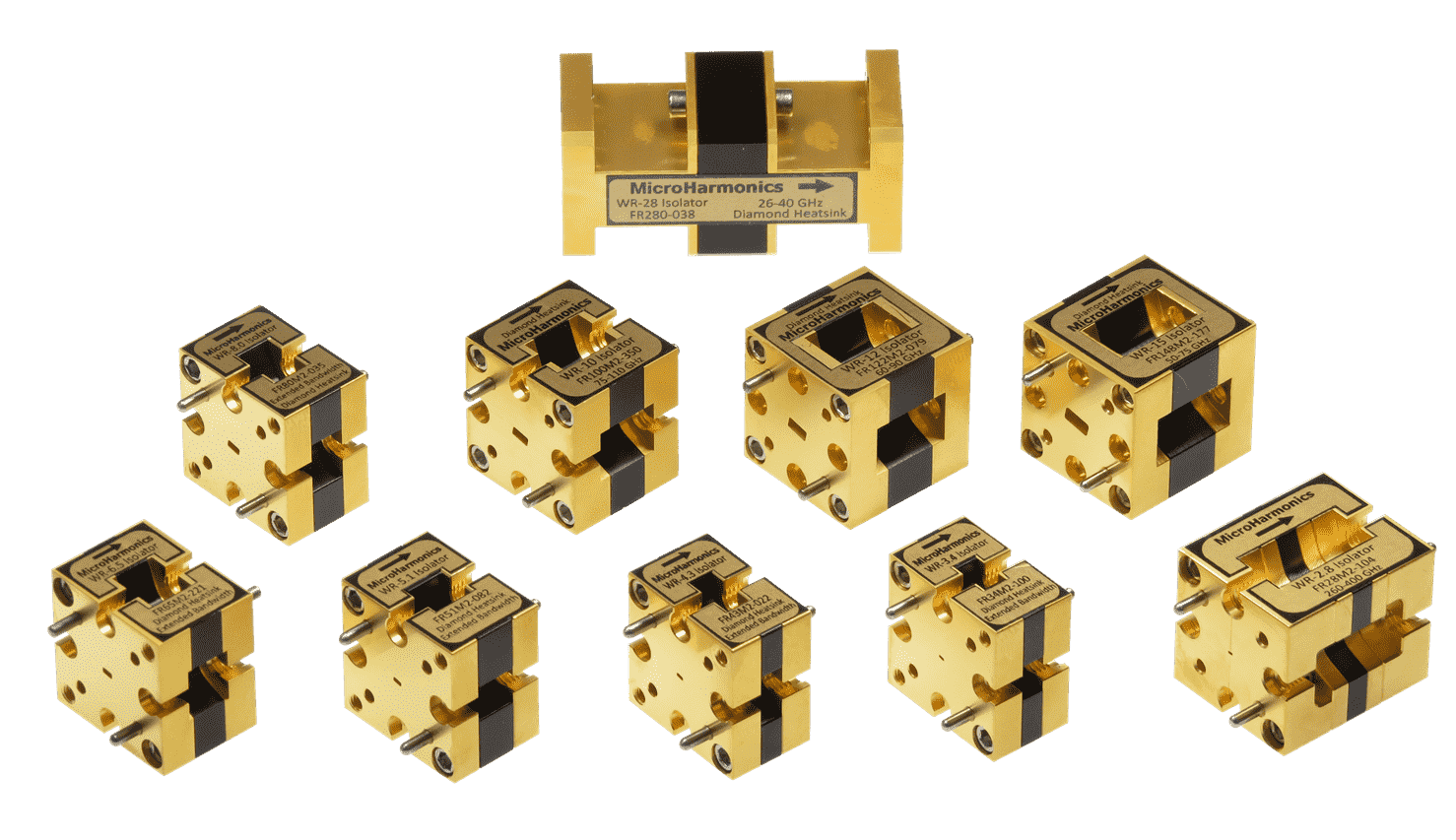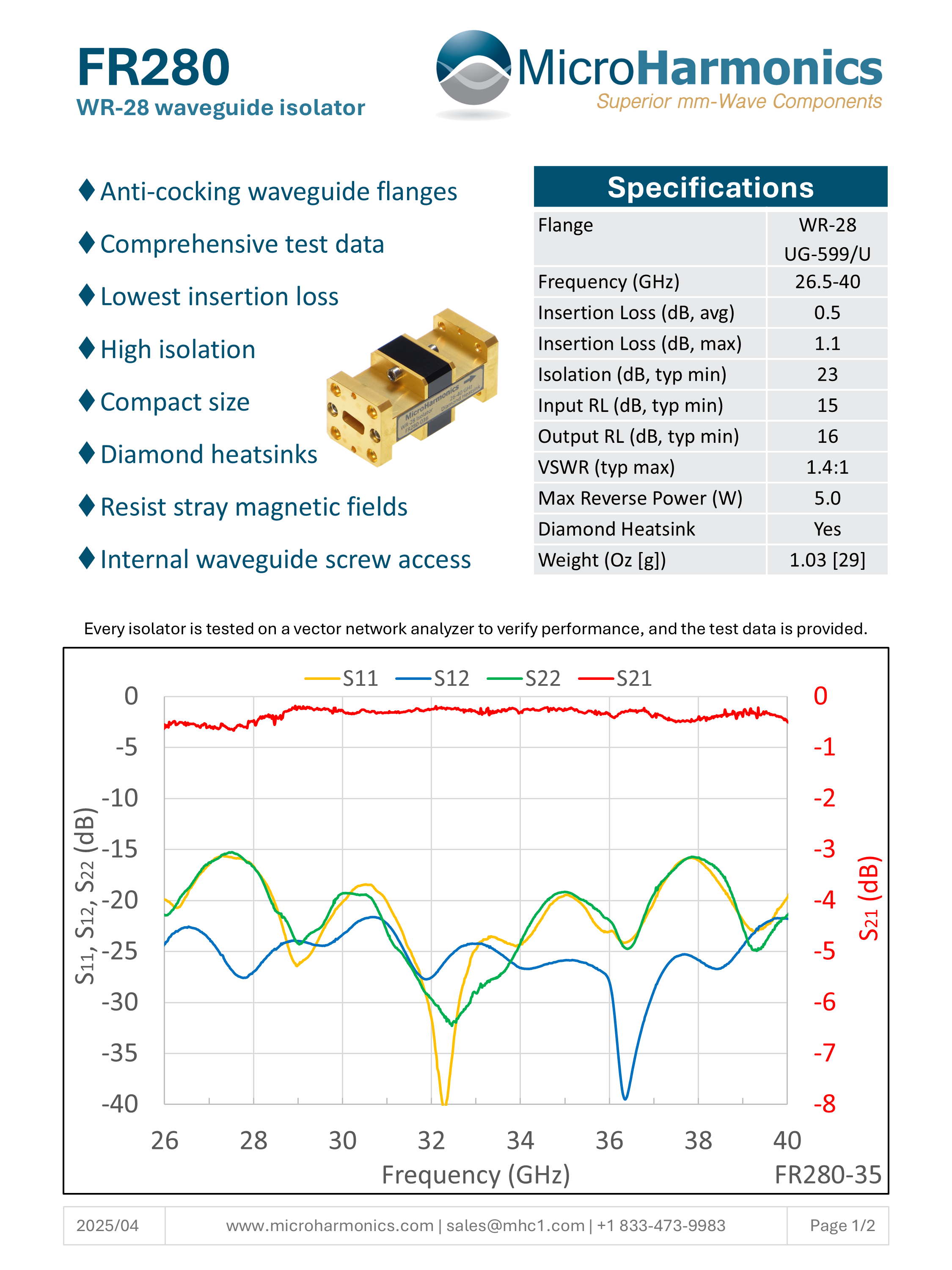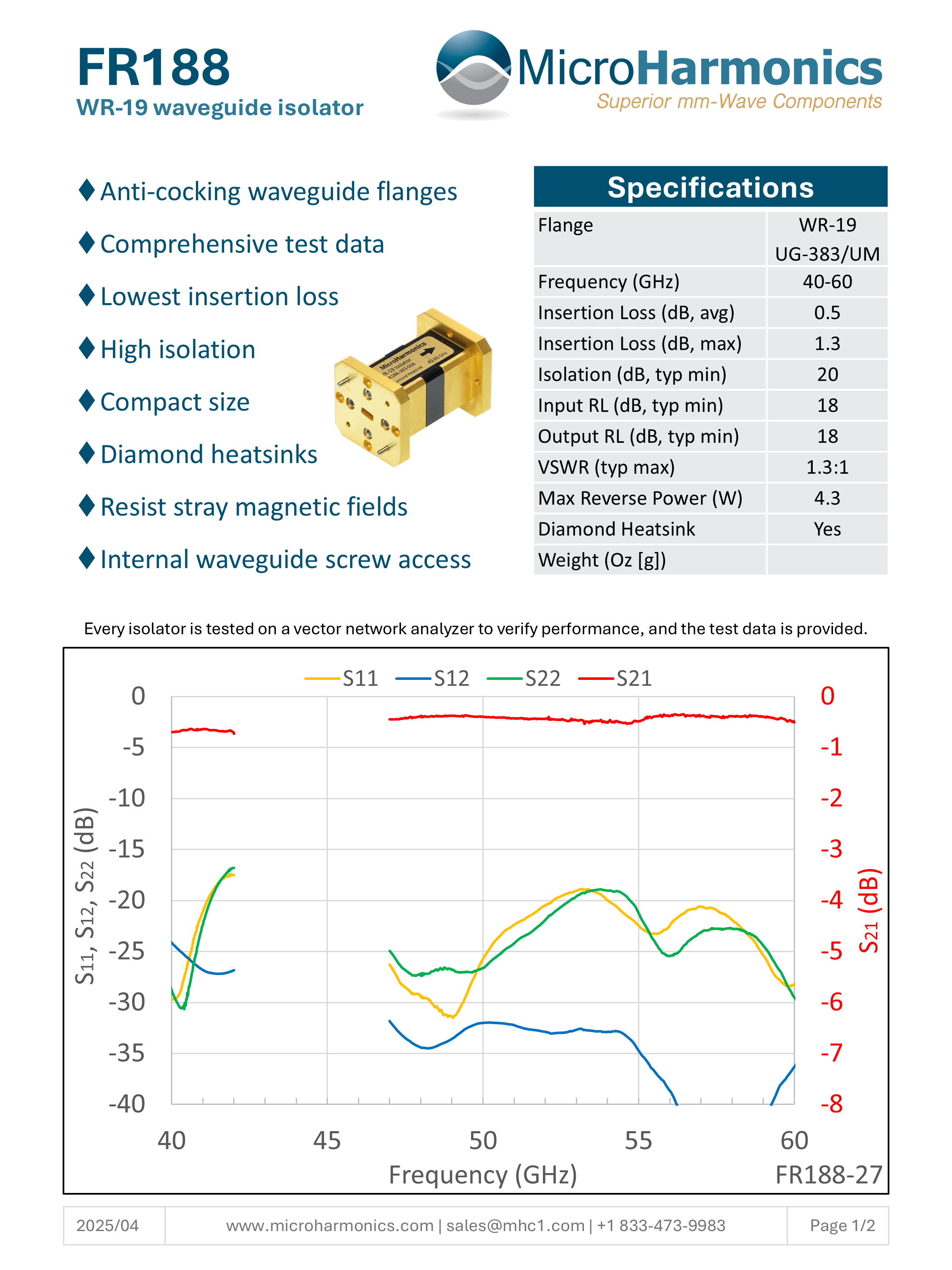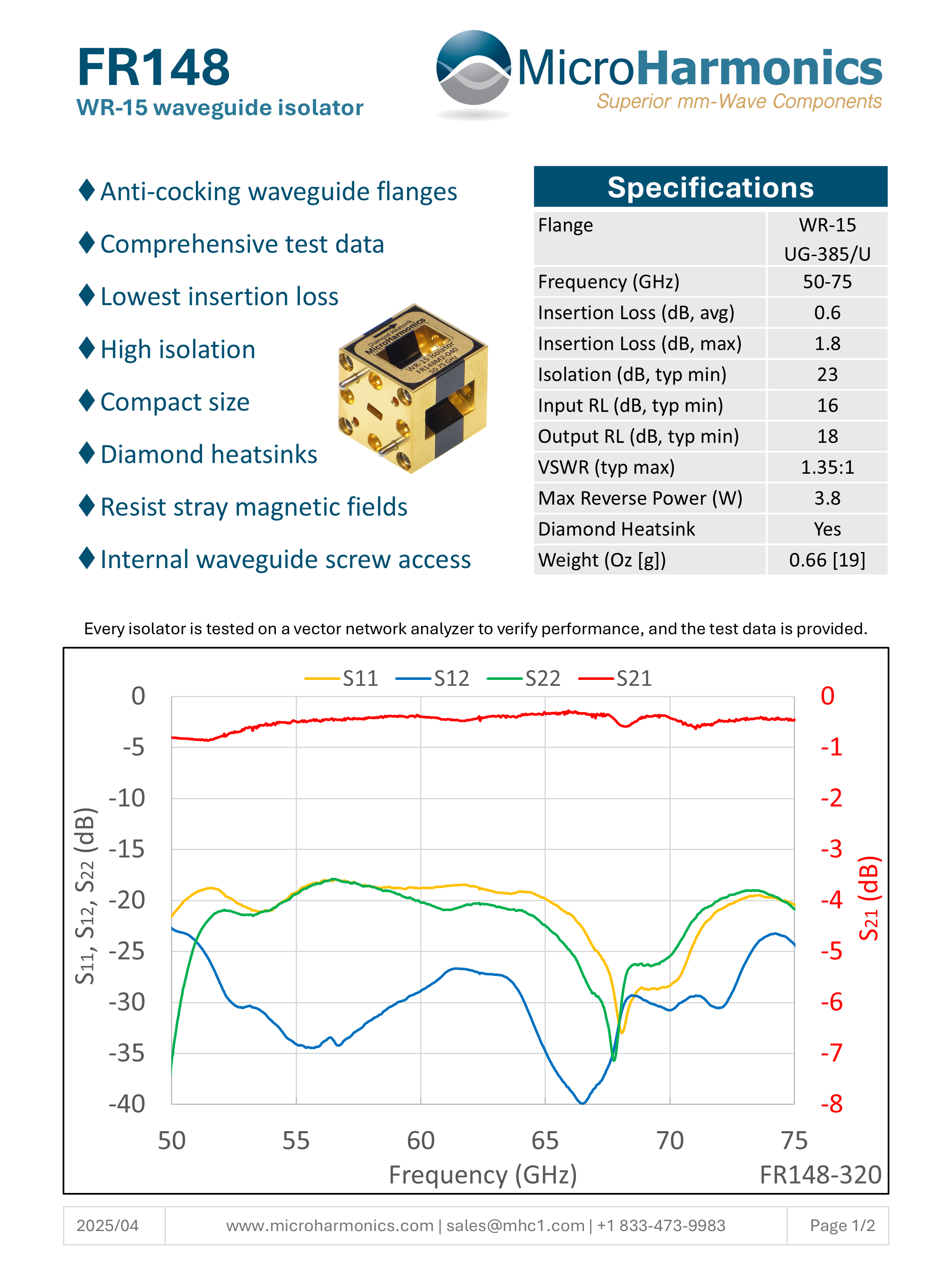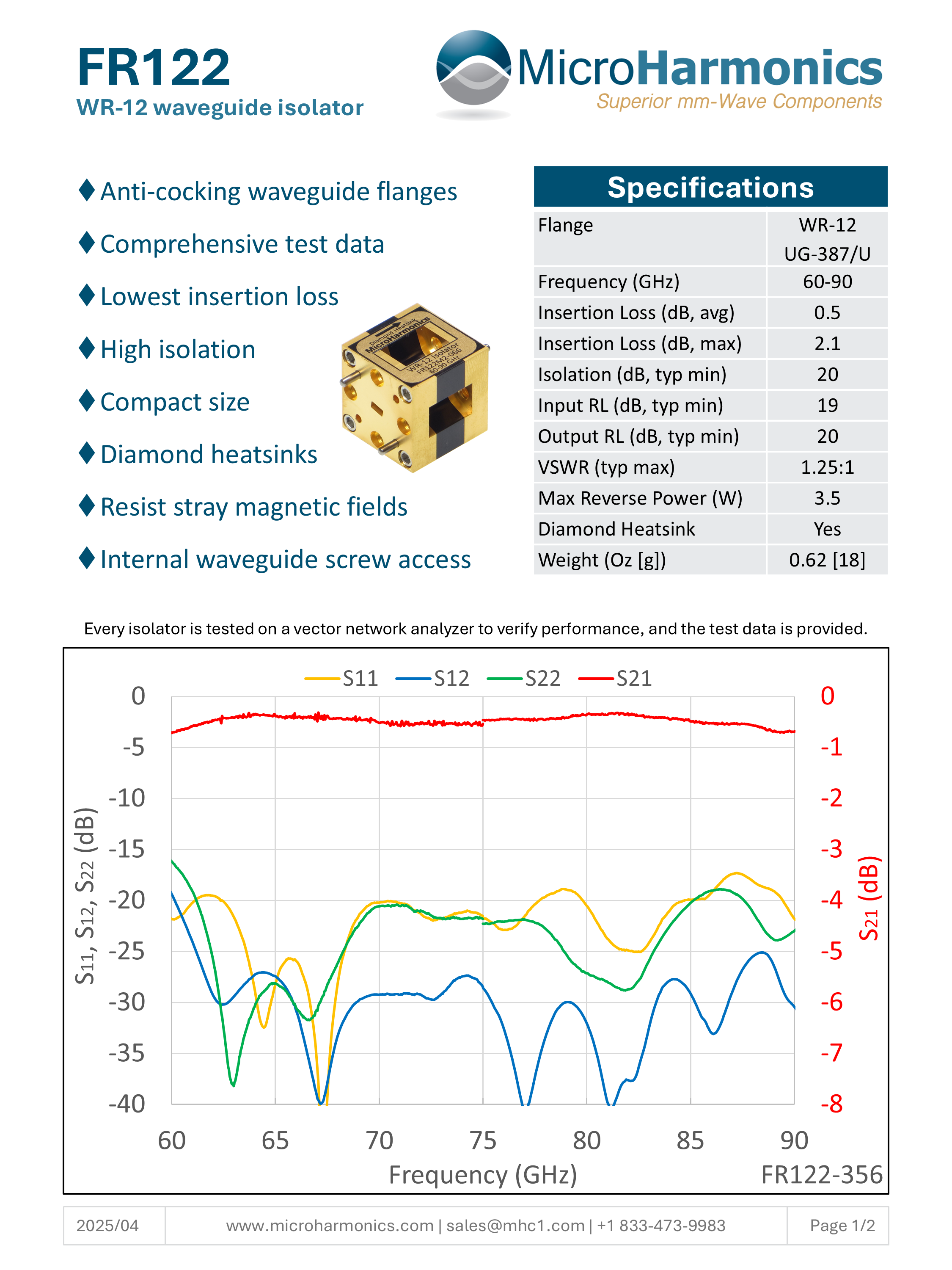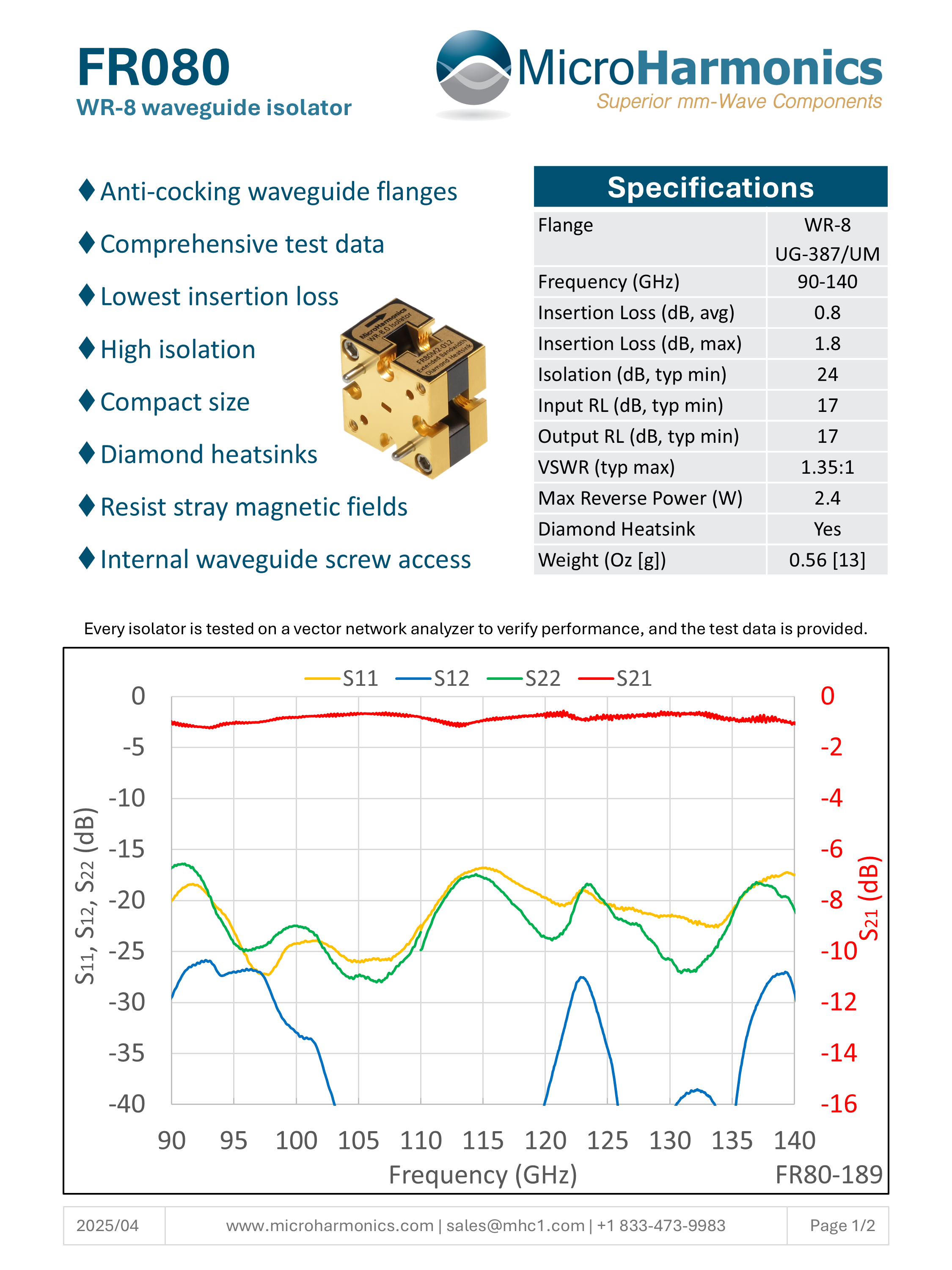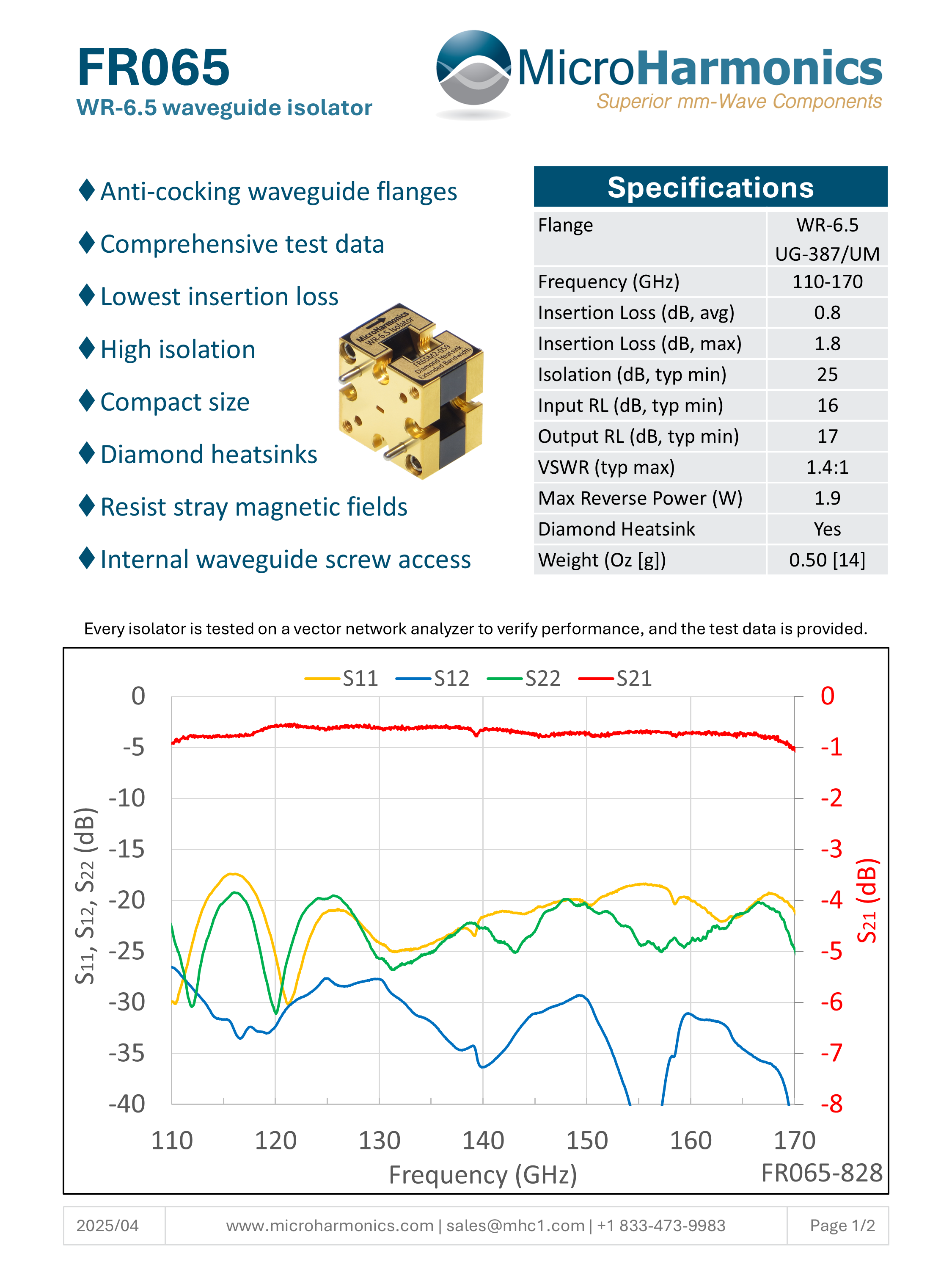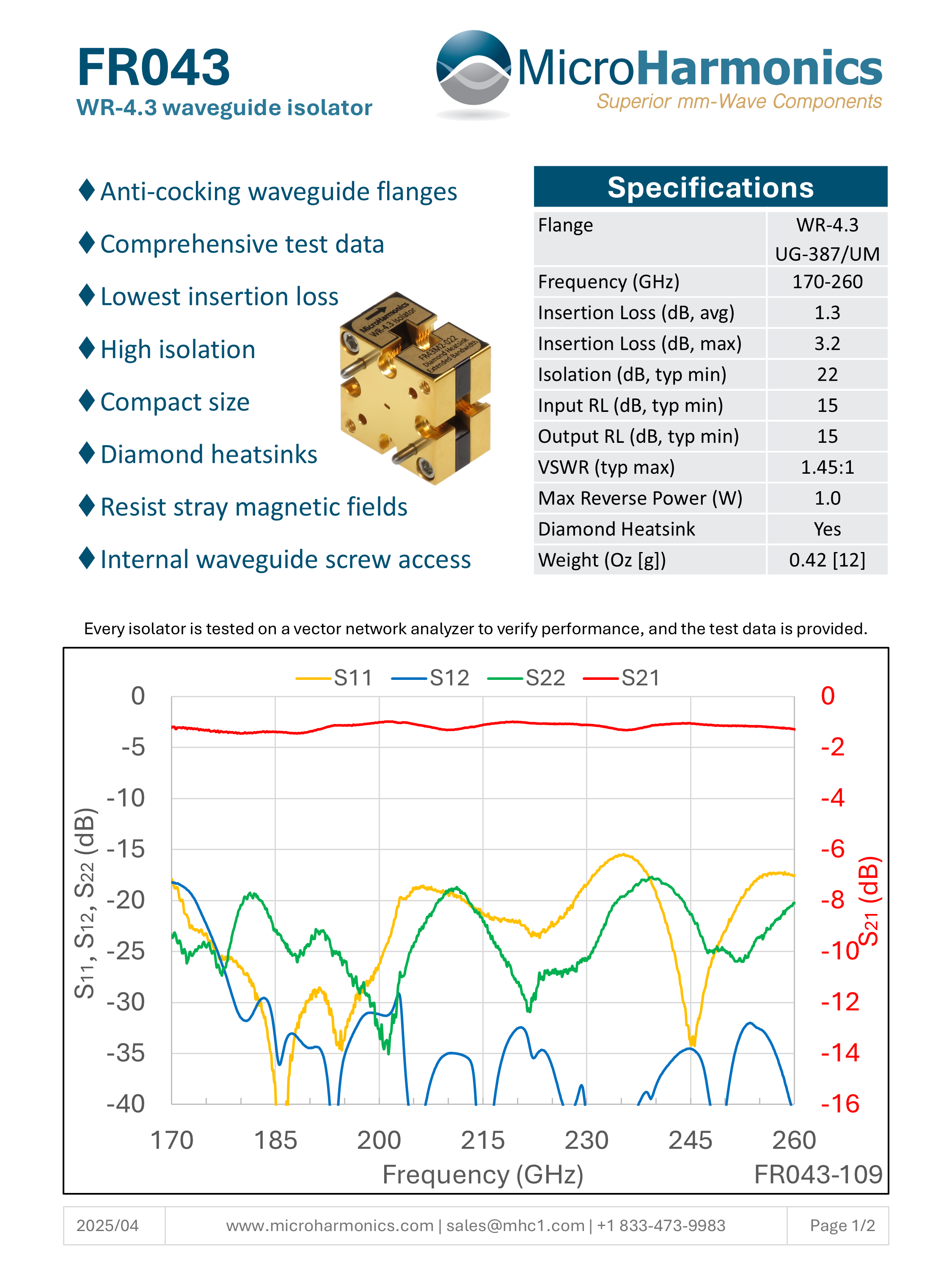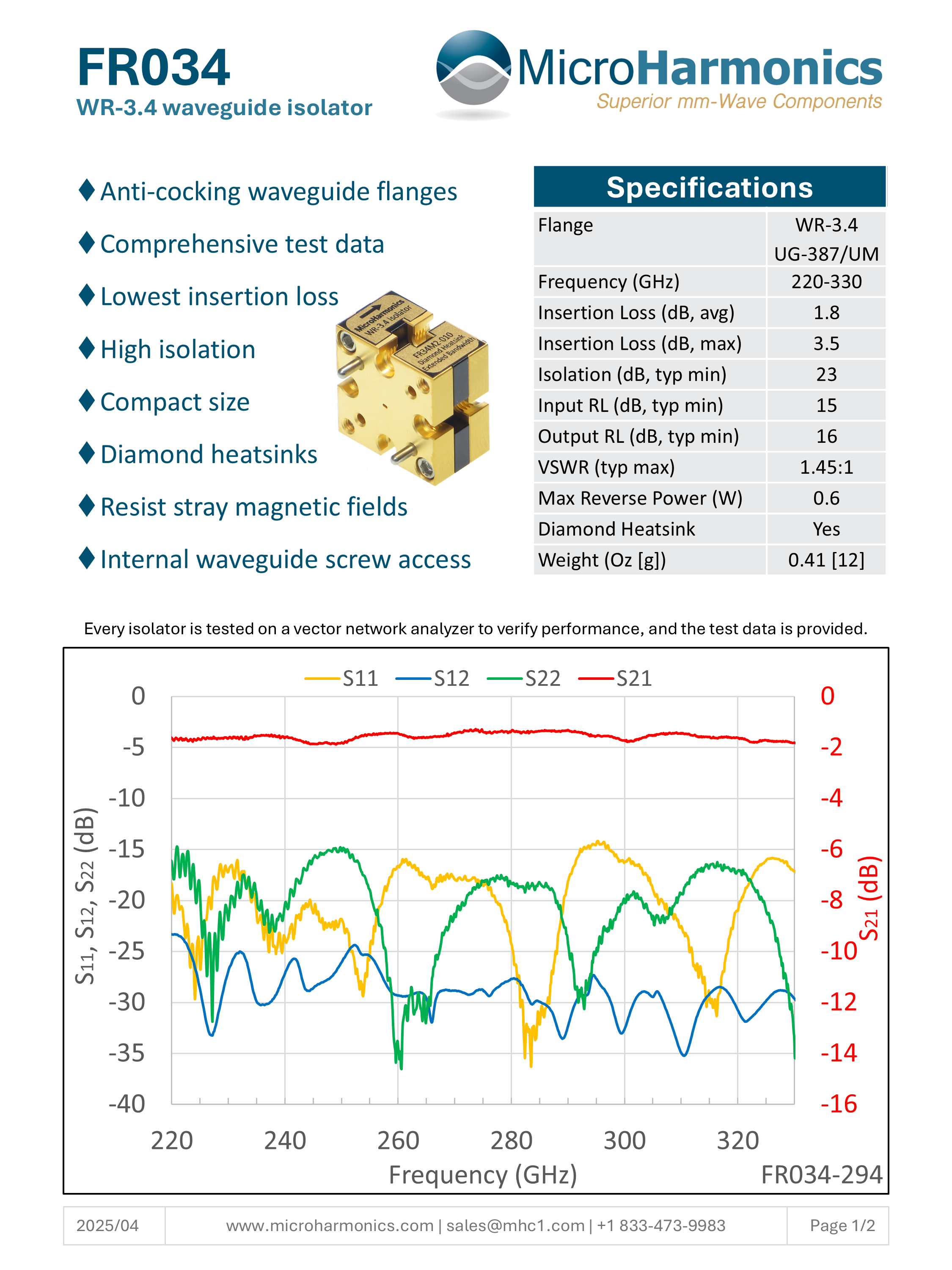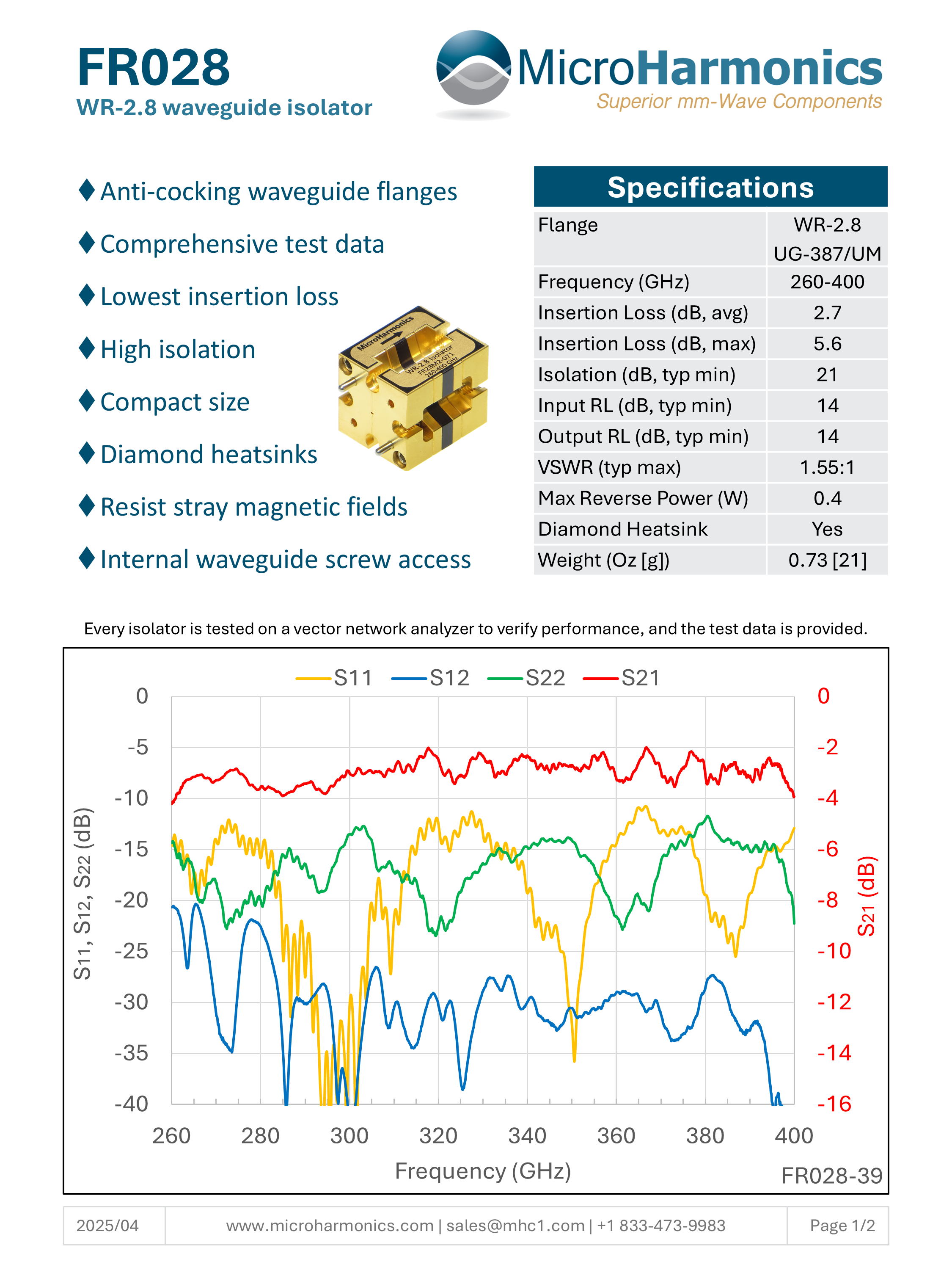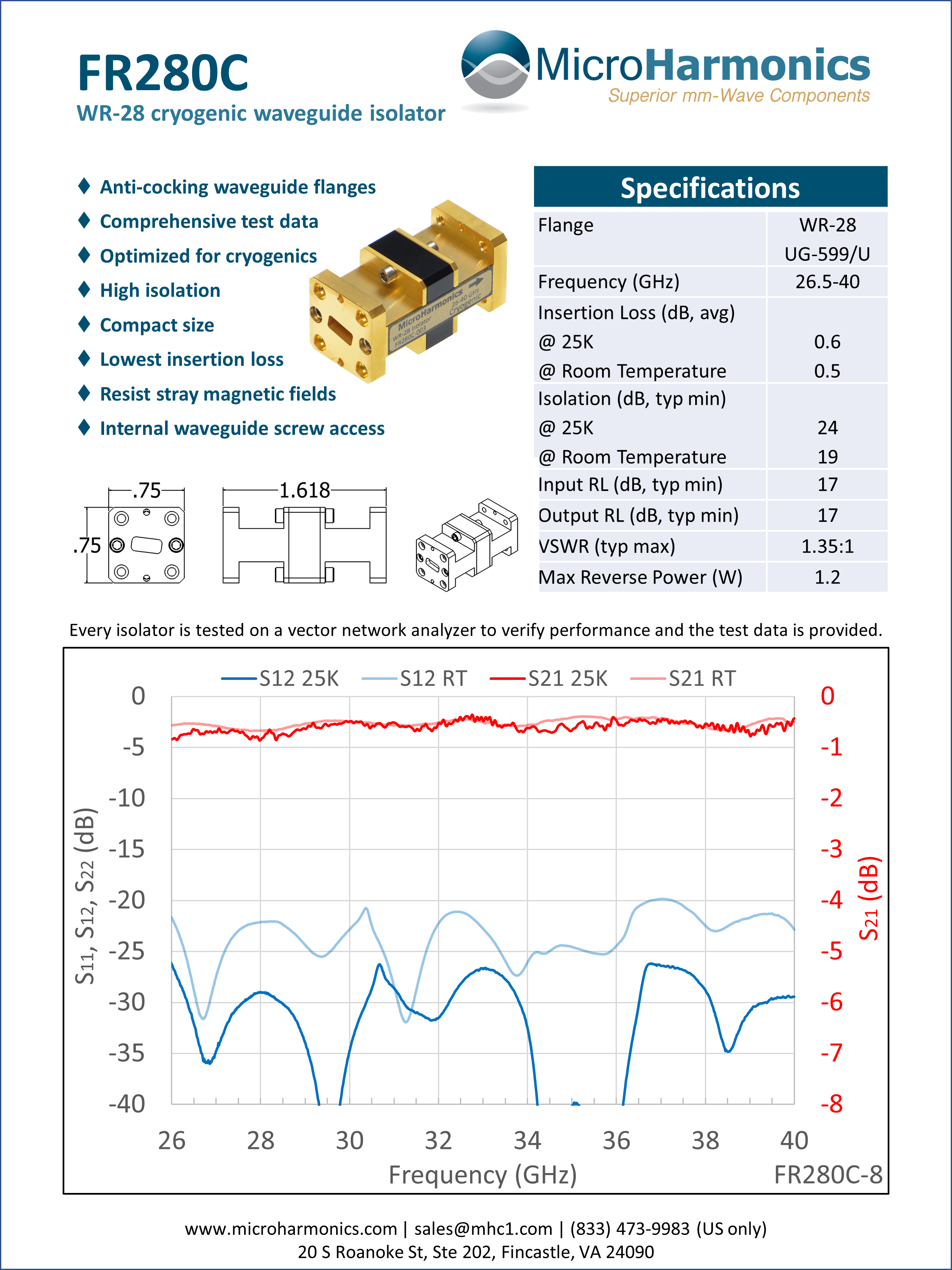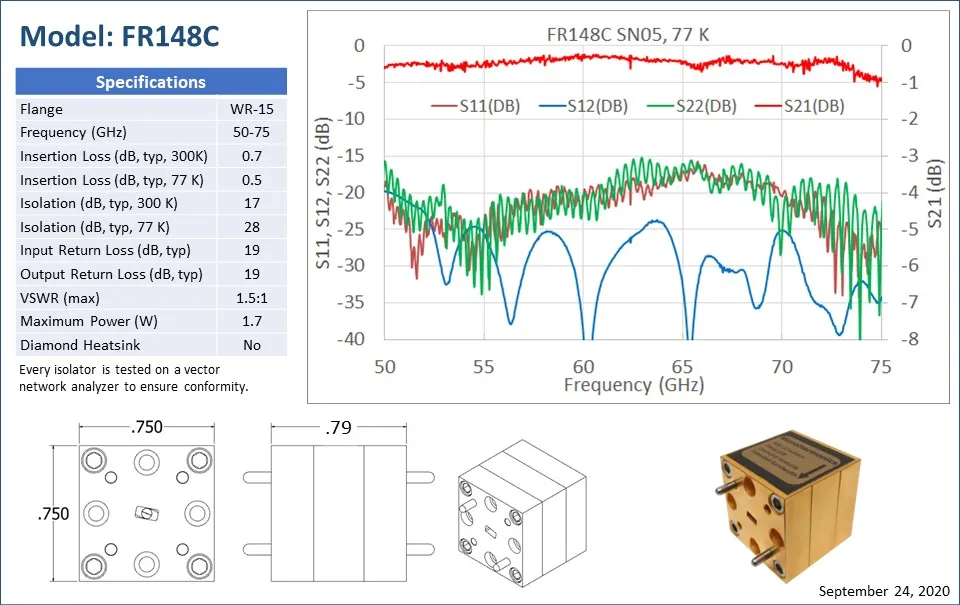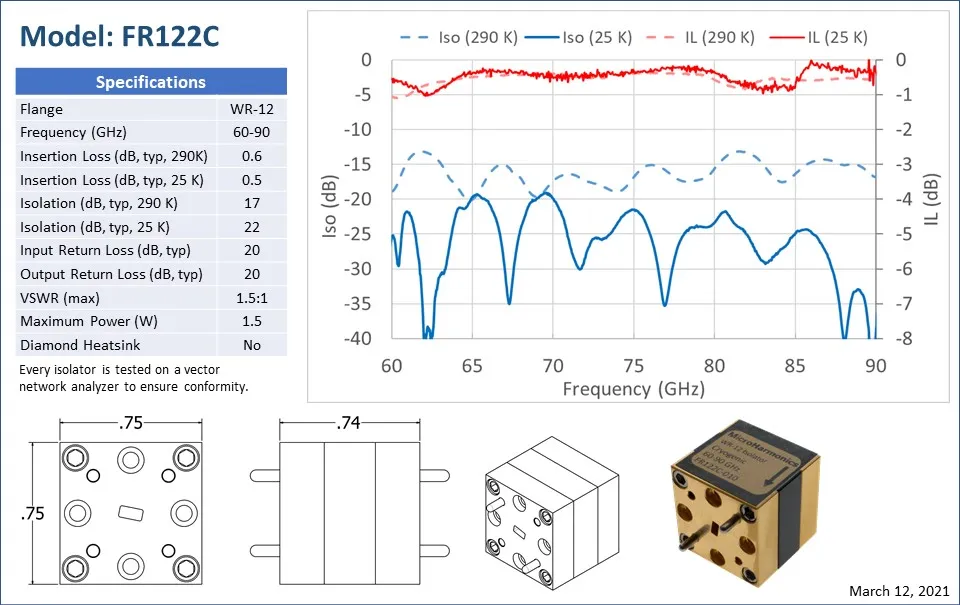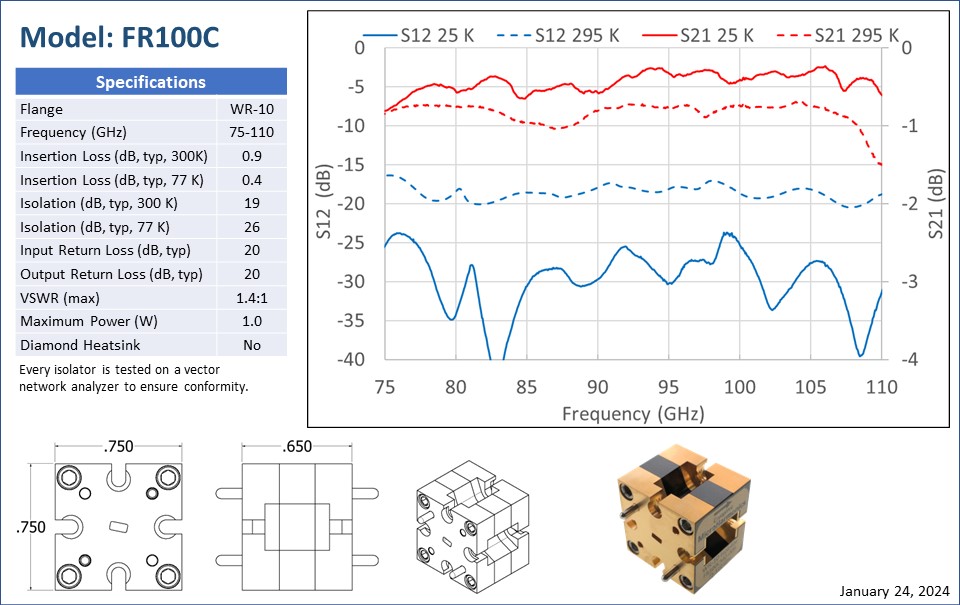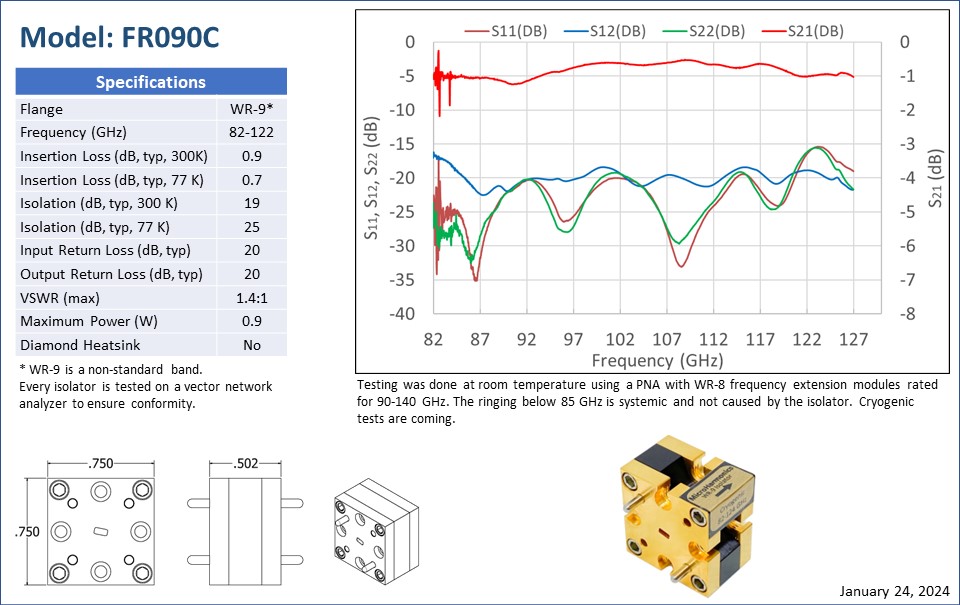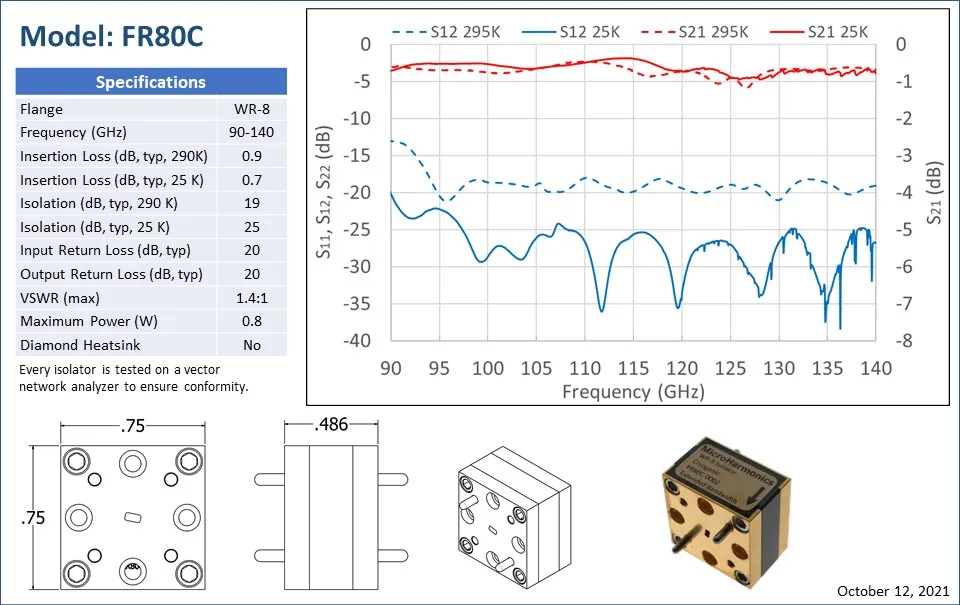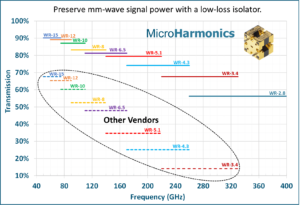Our millimeter wave Faraday rotation isolators are the best choice to suppress standing waves in your systems. They have the lowest insertion loss in the industry and are the perfect choice for sensitive millimeter wave instrumentation. Our millimeter wave isolators employ unique diamond heat spreaders for cooler operating temperatures and improved power handling. They are 100% made in the USA and can be sole-sourced in US government acquisitions.
GENERAL PRODUCT INFORMATION
The following information pertains to the millimeter wave isolator catalog listed below. Please click the individual product links below for detailed spec sheets.
- All isolators are intentionally engineered with canted rectangular waveguide alignment as part of the stepped twist design. However, they are designed to mate with standard waveguide flanges. Refer to this Application Note for more details.
- In our standard isolator configuration, the two flanges are colinear and oriented so that both the input and output waveguides are in the same plane. On request, certain isolators can be configured so that one of the flanges is rotated by 90 degrees. This provides a 90 degree twist with the flanges remaining colinear. We do not currently offer isolators with 90 degree bends. For an image comparing the two configurations click here.
FARADAY ROTATION ISOLATORS
| Model | Flange (EIA) | Band (GHz) | Insertion Loss (dB, Avg) | Isolation (dB, Typ Min) | Max Power(W) |
|---|---|---|---|---|---|
| FR280 | Spec Sheet | WR-28 | 26.5 – 40 | 0.5 | 23 | 5.0 |
| FR188 | Spec Sheet | WR-19 | 40 – 60 | 0.5 | 20 | 4.3 |
| FR148 | Spec Sheet | WR-15 | 50 – 75 | 0.6 | 23 | 3.8 |
| FR122 | Spec Sheet | WR-12 | 60 – 90 | 0.5 | 20 | 3.5 |
| FR100 | Spec Sheet | WR-10 | 75 – 110 | 0.6 | 25 | 2.9 |
| FR090 | Spec Sheet | WR-9 | 82 – 122 | 0.9 | 21 | 2.7 |
| FR080 | Spec Sheet | WR-8 | 90 – 140 | 0.8 | 24 | 2.4 |
| FR065 | Spec Sheet | WR-6.5 | 110 – 170 | 0.8 | 25 | 1.9 |
| FR051 | Spec Sheet | WR-5.1 | 140 – 220 | 1.1 | 22 | 1.3 |
| FR043 | Spec Sheet | WR-4.3 | 170 – 260 | 1.3 | 22 | 1.0 |
| FR034 | Spec Sheet | WR-3.4 | 220 – 330 | 1.8 | 23 | 0.6 |
| FR028 | Spec Sheet | WR-2.8 | 260 – 400 | 2.7 | 21 | 0.4 |
CRYOGENIC ISOLATORS
| Model | Flange (EIA) | Band (GHz) | Insertion Loss [25K, 300K] (dB, Avg) | Isolation [25K, 300K] (dB, Typ Min) | Max Power(W) |
|---|---|---|---|---|---|
| FR280C | Spec Sheet | WR-28 | 26.5 – 40 | 0.6, 0.5 | 24, 19 | 1.2 |
| FR148C | Spec Sheet | WR-15 | 50 – 75 | 0.5, 0.7 | 28, 17 | 1.0 |
| FR122C | Spec Sheet | WR-12 | 60 – 90 | 0.5, 0.6 | 22, 17 | 1.0 |
| FR100C | Spec Sheet | WR-10 | 75 – 110 | 0.5, 0.6 | 24, 17 | 1.0 |
| FR090C | Spec Sheet | WR-9 | 82 – 122 | 0.7, 0.9 | 25, 19 | 0.9 |
| FR080C | Spec Sheet | WR-8 | 90 – 140 | 0.7, 0.9 | 25, 19 | 0.8 |
| FR065C (TBD) | WR-6.5 | 110 – 170 | |||
| FR051C (TBD) | WR-5.1 | 140 – 220 |
Interested in purchasing our products? Email us using sales@mhc1.com or refer to our contact information linked below.
For more information concerning our product lines, white papers, and informational videos follow the link below.
Low Insertion Loss Isolators
The traditional style millimeter wave (MMW) isolators offered by other vendors have high insertion loss which often precludes their use in MMW systems. Micro Harmonics millimeter wave isolators have the lowest insertion loss and the highest frequency coverage in the industry as illustrated in the graph below. Our waveguide isolators work over extended bandwidths (wider than standard waveguide bands), are much smaller than traditional style isolators and have unique CVD diamond heat spreaders for increased power handling. Micro Harmonics provides comprehensive VNA test data at over 1200 data points across the band with every millimeter wave isolator that we sell. Join the growing list of companies who are engineering Micro Harmonics millimeter wave isolators into their systems and realizing significant improvements in system performance.
Diamond Heatsink Technology
Our millimeter wave isolators (mmw isolators) employ a modern design yielding much lower insertion loss than most commercial products. Millimeter wave isolators also work over broader bandwidths in excess of standard waveguide bands. But there is another important difference that sets our millimeter wave isolators apart from conventional products. Our millimeter wave isolators employ a diamond support disc that channels heat to the block and thus they can handle greater reverse power levels. To our knowledge no other commercial millimeter wave isolators offer this advantage.
At Micro Harmonics we believe in designing and manufacturing the best waveguide products; this includes our millimeter wave isolators, millimeter wave circulators, millimeter wave orthomode transducers, and millimeter wave attenuators. If you would like to know more about our products, contact us now.

